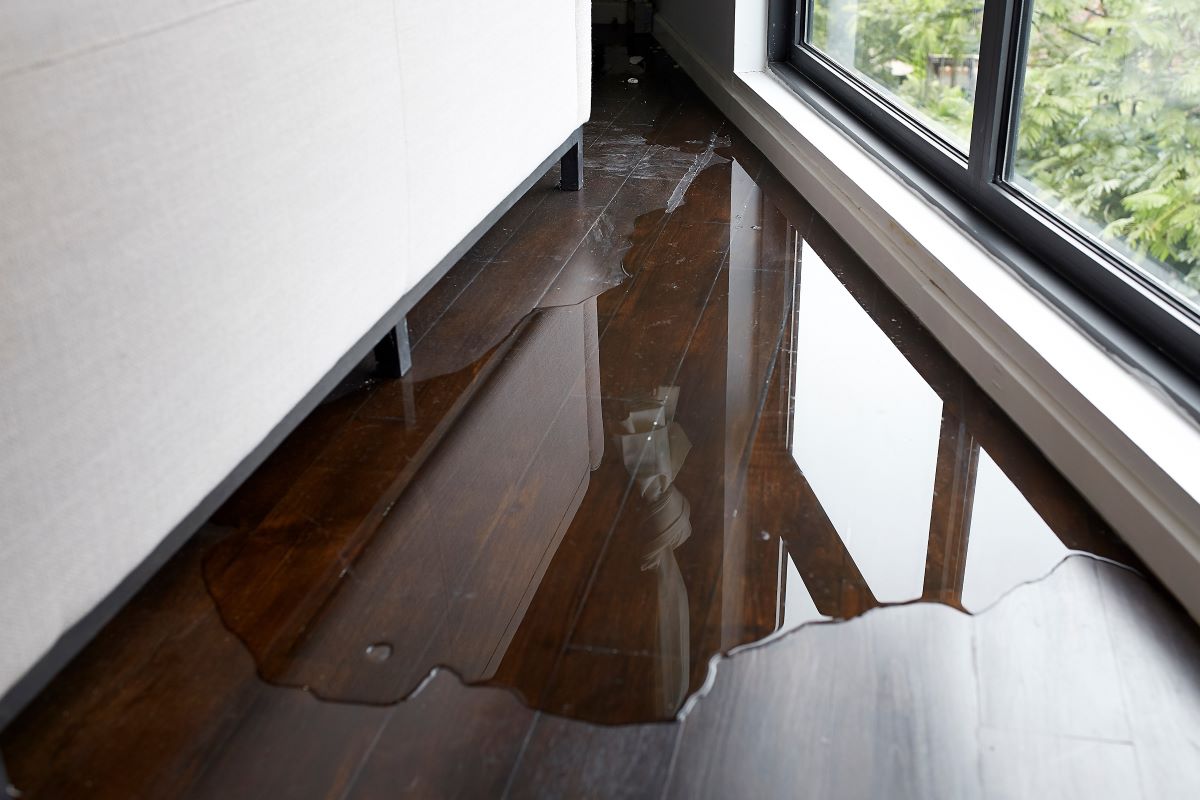By TJ Grim, Ready 2 Respond Trainer
When managing a hospital, university campus, K-12 school, or commercial building, water damage is often seen as something that only happens during major floods or catastrophic pipe failures. The reality is much different. Most facility managers find that the costliest and most disruptive water damage often starts with something as simple as a dripping pipe in a mechanical room or a small leak around a window after a storm.
A Little Water Can Cause Serious Damage
Imagine a slow leak behind a nurse’s station wall or under a classroom sink. In many cases, less than an inch of water can begin to warp flooring and damage baseboards within a day or two. In patient rooms, administrative offices, or classrooms, even minor water accumulation can quickly compromise floor adhesives and damage finishes that require expensive replacement.
A few inches of water can seep into drywall, insulation, and electrical outlets, making a once-manageable leak a significant safety hazard that requires professional remediation. If water reaches mechanical spaces or electrical panels, the risk escalates, potentially requiring shutdowns of essential services until systems can be inspected and cleared for use.
Why Speed Matters in Water Intrusions
The timeline for water damage progression is brutally fast:
- Within hours, drywall and insulation begin to absorb moisture, and materials can swell or buckle.
- Within a few days, mold can begin to form, creating air quality and health risks that may affect students, patients, or staff.
- Within a week, structural damage and widespread contamination can force spaces offline for extended remediation, causing disruption to classes, patient care, or business operations.
In many healthcare and educational settings, damage from a small, unnoticed leak can trigger regulatory and safety concerns, requiring environmental testing or clearance before reopening impacted areas.
It’s Not Just About Quantity—It’s About Quality
While clean water leaks can cause structural damage if left unaddressed, leaks involving contaminated water—such as sewage backups or stormwater infiltration—bring additional hazards that can affect facility health and safety protocols. These incidents require specialized cleanup and disinfection, raising remediation costs significantly and extending downtime.
Spotting Trouble Before It Spreads
Many water damage cases could be prevented or minimized if early warning signs were caught in time. Facility teams should watch for:
- Discolored ceiling tiles or paint
- Soft spots in walls or flooring
- Unusual musty smells in specific rooms or corridors
- Unexpected increases in water usage
- Visible moisture on pipes or near mechanical equipment
- Signs of mold around windows, restrooms, or utility spaces
Regular walkthroughs, moisture checks, and a clear reporting system for staff can help catch these issues before they escalate.
Prevention: Your Best Defense
Water damage prevention doesn’t require large investments but does require intentional facility practices:
- Inspect roofs regularly, especially before storm seasons.
- Check plumbing connections, supply lines, and HVAC drain pans for leaks or corrosion.
- Maintain window and door seals to prevent wind-driven rain from entering.
- Install water sensors in high-risk areas like IT closets, labs, and mechanical rooms.
- Train facilities teams to respond quickly to leaks and to understand the critical importance of immediate extraction and drying when water is discovered.
Having a clear, practiced emergency water response plan enables your team to act quickly, reducing damage, avoiding mold growth, and maintaining operational continuity.
Final Thought
In facility management, it’s rarely the dramatic water events that cause the most disruption—it’s the slow, hidden leaks that become expensive, health-impacting problems if ignored.
By treating every leak seriously, responding immediately, and maintaining a proactive maintenance culture, you can protect your facility’s operations, budgets, and the people who depend on your buildings every day.
For further guidance on spotting and managing flooding from everyday leaks, contact the R2R team. For facility management tips, follow us on LinkedIn and subscribe to our Facility Insights newsletter.


Case Study: Prisma Health Strengthens In-House Water Response
Why the Right Drying Equipment Makes a Difference